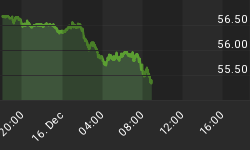Last week at its regular policy-setting meeting, the Federal Reserve announced it would double down on the policies that have failed to produce anything but a stagnant economy. It was a disappointing, but not surprising, move.
The Fed affirmed that it is prepared to increase its monthly purchases of Treasuries and mortgage-backed securities if things don't start looking up. But actually the Fed has already been buying more than the announced $85 billion per month. Between February and March, the Fed's securities holdings increased $95 billion. From March to April, they increased $100 billion. In all, the Fed has pumped more than a half trillion dollars into the economy since announcing its latest round of "quantitative easing" (QE3) in September 2012.
Although many were up in arms when the Fed said it would buy $600 billion in government debt outright for the previous round, QE2, all seems quiet about the magnitude of QE3 because it doesn't come with huge up-front total price tag. But by year's end the Fed's balance sheet could hit $4 trillion.
With no recovery in sight, where's all this money going? It is creating bubbles. Bubbles in the housing sector, the stock market, and government debt. The national debt is fast approaching $17 trillion, with the Fed monetizing most of the newly issued debt. The stock market has been hitting record highs for the past two months as investors seek to capitalize on the Fed's easy money. After all, as long as the Fed keeps the spigot open, nominal profits are there for the taking. But this is a house of cards. Eventually, just like in 2008-2009, the market will discipline the bad actions of the Fed and seek to find the real normal.
In the meantime, real families are suffering. While Wall Street and the government take advantage of access to the Fed's new "free" money, the Fed claims there is no inflation. But who hasn't paid higher prices at the grocery store, the gas pump, for tuition, for insurance? It's bad enough that household incomes have stagnated, but real purchasing power has declined so much that one in seven Americans, 47.3 million people, are on food stamps. Five million are collecting unemployment insurance with 21.5 million afflicted by unemployment according to the government's own figures. That's 13.9 percent -- close to double the 7.5 percent unemployment number reported last week.
We are certainly not in a recovery. We don't see the long unemployment and soup kitchen lines like in the Great Depression, but that's just because the lines are electronic now.
It is not surprising the Fed has decided to hand the American people more of the same failed policies. But it is disappointing. We know what the real solution is: allow the marketplace to work. Allow entrepreneurs the chance to create instead of stifling innovation with arbitrary regulations. Allow interest rates to rise to equal the risks in the economy. Allow bad debts to be liquidated so we can build on a firm foundation. Stop printing money to benefit the government and big banks. Restore sound money to the economy and the American people. Sound money is the bedrock for prosperity and the best check on big government and crony capitalism.
















